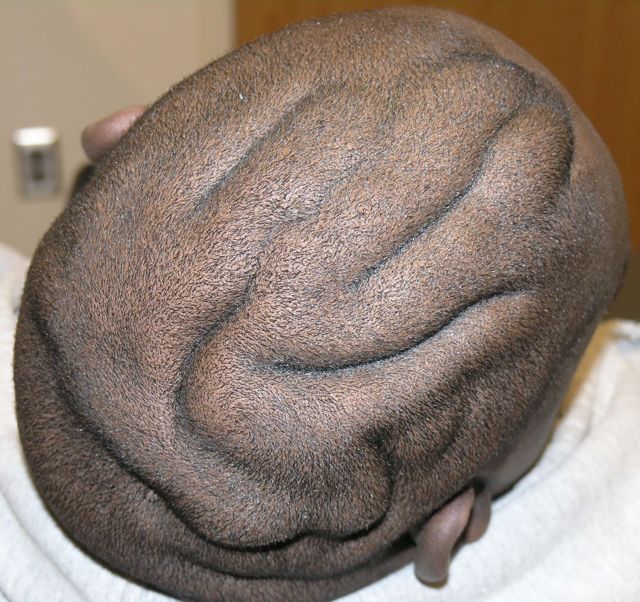Appearance Of Cutis Verticis Gyrata

CVG appears as folds or creases in the scalp that resemble a cerebriform pattern. The bunched ridges usually feels soft and spongy. There can be as many as ten or as few as two of these folds, which usually form at mid or rear-scalp (though they may sometimes occupy the entire scalp). Over time, hair loss may occur over the bunched or raised surfaces, while hair remains in tact in the furrowed parts.
Cutis Verticis Gyrata Treatment
At this time there is no cure for CVG. Treatment is limited to surgical excision, which may mean scalp reduction or scalp subcision.
A Cutis Verticis Gyrata And Hair Loss: A Testimony
Aside from the obvious cosmetic concerns of CVG, one may secondarily wonder what to do about the resulting hair loss. Can hair transplant be successfully performed on someone with CVG? If so, would it help conceal the larger problem? What about someone with CVG who also has pattern baldness? One sufferer of this mysterious disease and member of the Hair Restoration Network community asked about advancements in the treatment of cutis verticis gyrata.
